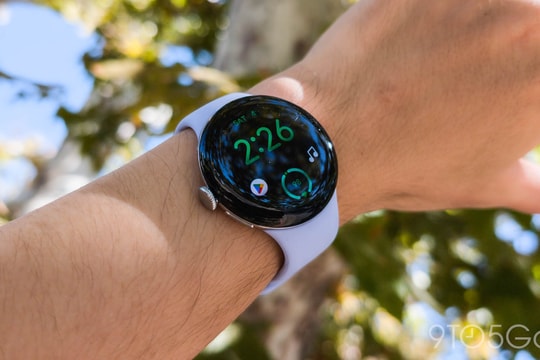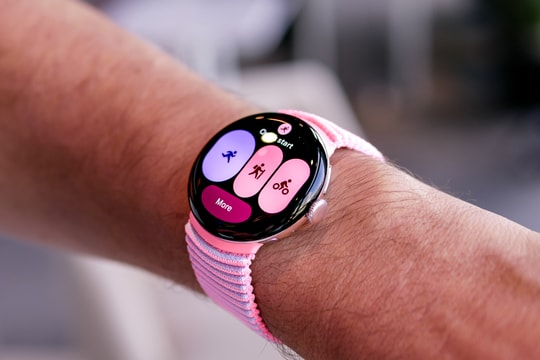Pixel Watch 4 Decoding: Dome Display, Fast Charging, and AI
Pixel Watch 4 upgrades the domed Actua 360 display, Wear OS 6 with Material 3 Expressive, Raise to Talk gestures with Gemini, fast charging via magnetic dock, and an easily repairable chassis.
The Pixel Watch 4 marks a clear step forward in Google’s direction for smartwatches: a focus on display, software experience, and hands-free interaction. Underneath the largely unchanged exterior, the device features an Actua 360 surround display, a redesigned Wear OS 6 based on Material 3 Expressive, Raise to Talk gestures with Gemini, faster charging speeds, and a repairable design – changes that will directly impact how users wear and operate the device every day.
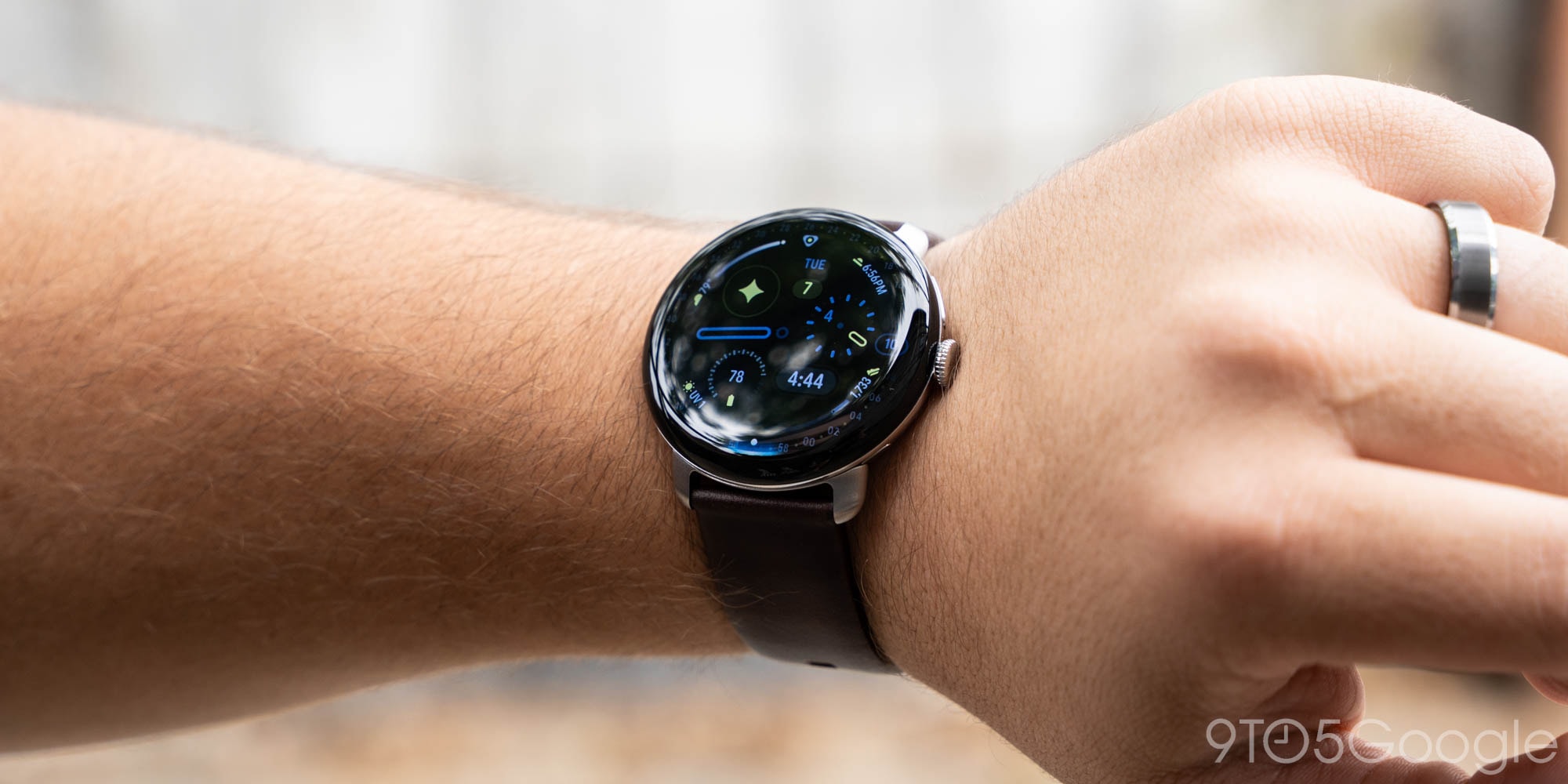
Actua 360 surround display: floating effect and outdoor visibility
Google changed the display structure: the entire surface is a domed glass, not just a curved glass covering a flat panel like before. The bezels are a little thinner, but the big difference is the 3D visual effect when viewed head-on – the feeling of the watch face “protruding”. It may look strange at first, but after a while, the curvature becomes natural, similar to the experience of going from a flat screen to a curved screen.
Overall brightness is up from previous generations, though only marginally better than the Pixel Watch 3 in most situations. However, the extra brightness helps to eliminate reflections from the dome surface better. On the 45mm version, the ample display space for notifications and content previews is a clear advantage over the 41mm.
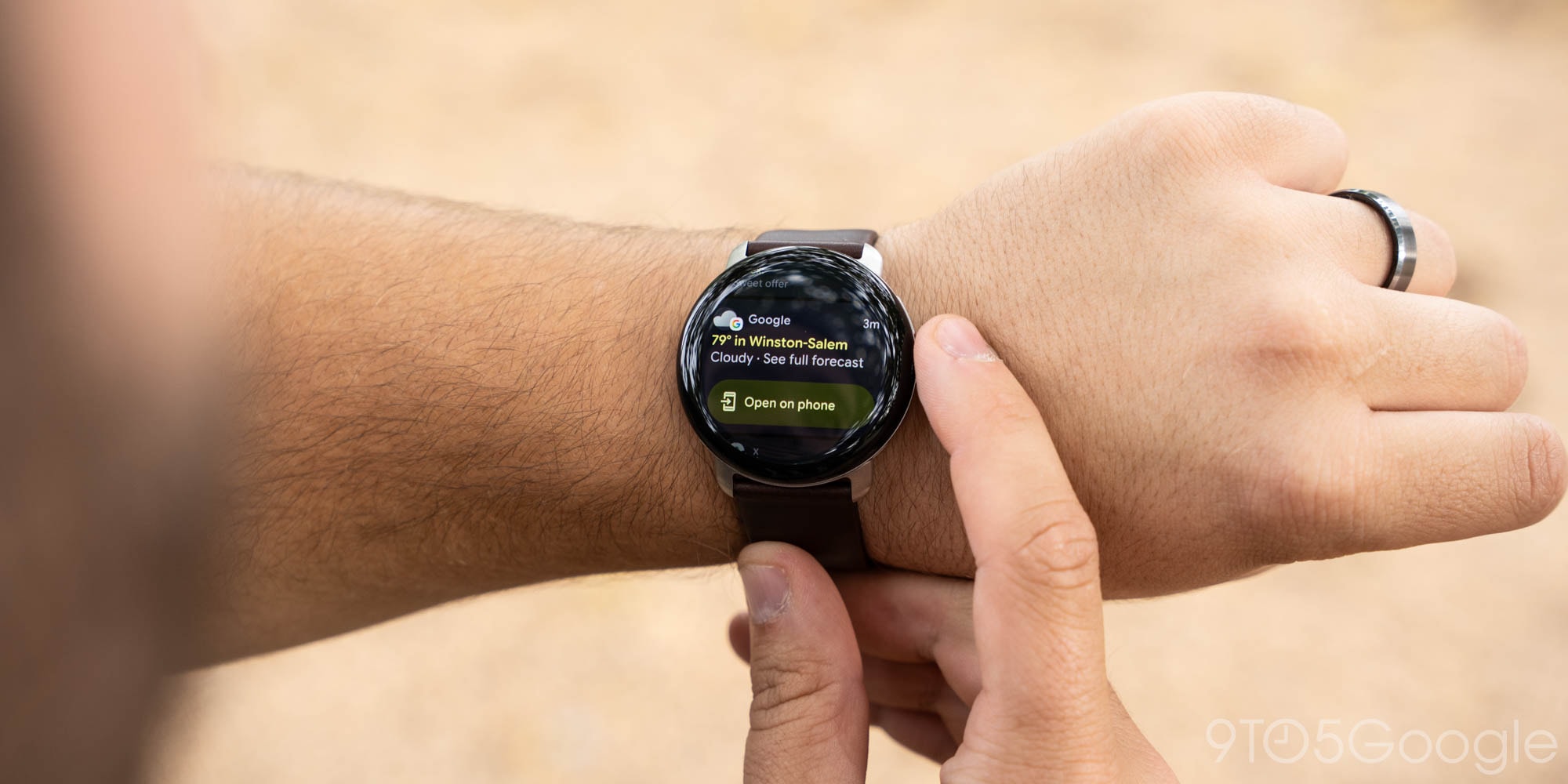
Design and strap: familiar but refined
The overall design remains largely unchanged, with a focus on compactness and comfort. The 45mm version offers a better reading experience, while some of the Pixel Watch 4 bands tend to be a little more difficult to attach than their predecessors, requiring more pressure to snap into place.
Repairability: big change after four generations
The hardware breakthrough worth noting is repairability. Two screws at each end of the cable clamp allow access to the inside to replace the battery, display, and other components. While replacement costs have not been disclosed, previous repair demonstrations suggest the process is straightforward. This overcomes the “replace-it-or-break-it” limitations of previous generations and makes extended warranties less of a requirement.
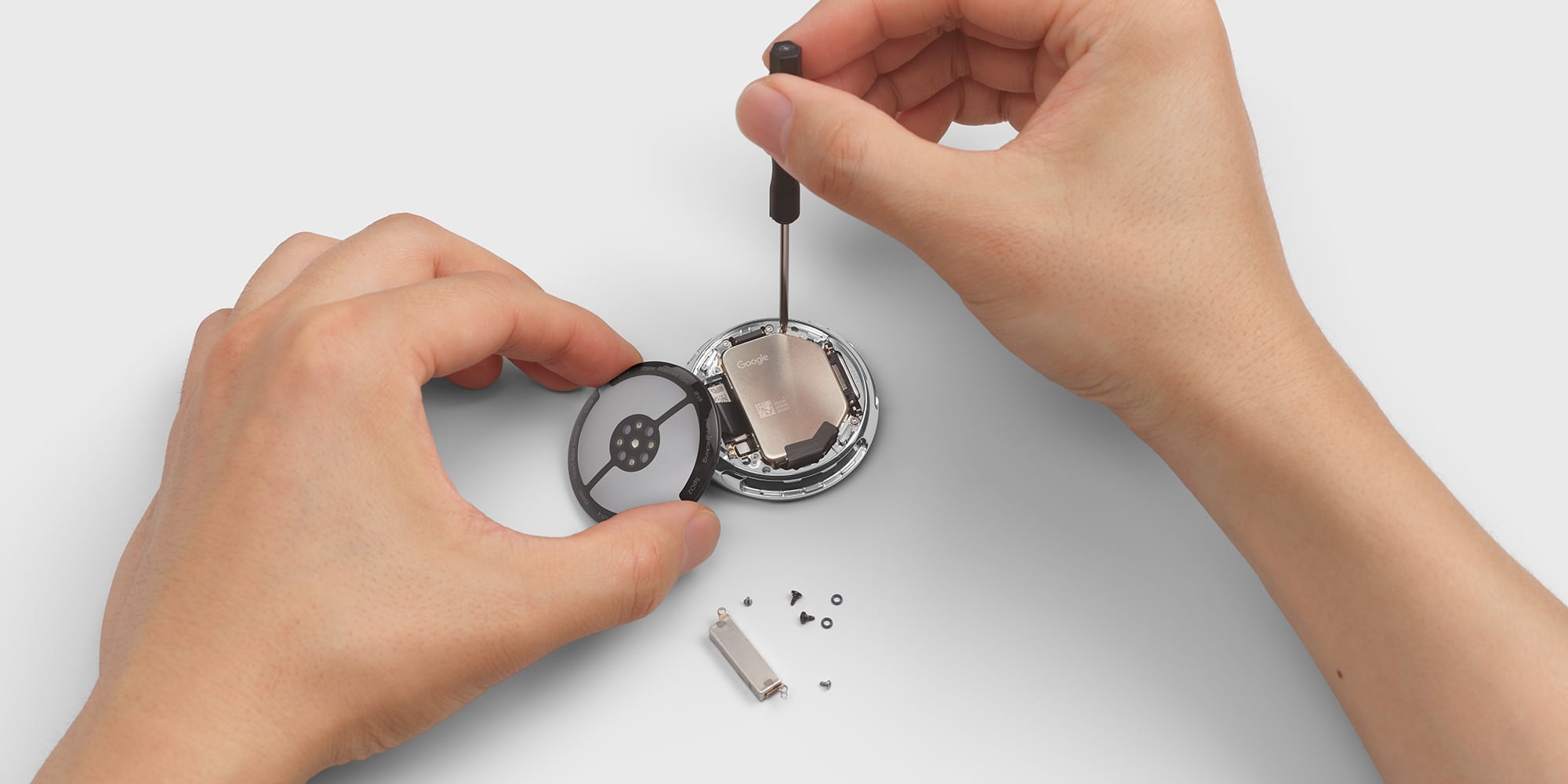
Wear OS 6 and Material 3 Expressive: a smooth and consistent software experience
Wear OS 6 keeps the familiar navigation structure of Tiles, notifications, and Quick Settings, but the interface is refreshed with Material 3 Expressive. The color system automatically syncs with the watch face you're using, from PIN unlock to notifications and the weather app, giving it a more unified and dynamic feel.
Google added AI-powered smart replies, but the difference from previous contextual suggestions is not too obvious. Notification cooling is also present but not noticeable during use, as the design goal. Notably, in some cases, the watch stopped receiving notifications when paired with the Galaxy Z Fold 7; forcing the Pixel Watch app on the phone and removing/re-granting notification permissions temporarily fixed the problem.
Raise to Talk with Gemini: gesture-activated assistant
The Raise to Talk gesture lets you raise your wrist to summon Gemini without a wake-up command or holding down a button. Once you enable the extra step on your phone, the experience is almost instantaneous: asking a question, requesting Google Home control, starting a Fitbit workout… all happens seamlessly. In practice, the feature works well most of the time, with the occasional misfire, but overall it’s a huge leap in convenience.
Raise to Talk relies on new hardware: The Pixel Watch 4 uses a new generation Snapdragon chip and Google's own co-processor to support this feature. The watch also adds satellite connectivity for safety situations. With these factors, Raise to Talk may not be available on older Pixel Watch models, and is the most attractive selling point of the generation 4.
Battery and charging: remove worries thanks to high charging speed
On the 45mm model, with the always-on display and Raise to Talk enabled (Hey Google disabled), the watch managed to get close to two days of use in our tests, even with GPS turned on occasionally for walking tracking. The battery-saving factor is the new charger: the charging pin has moved to the side, connects via a magnetic base, and charges very quickly.
In a real-world measurement, going from 29% to 95% takes just 23 minutes, enough to make charging “invisible” for short schedules like showering after a workout. While the exposed charging pins on the side may not be pretty, this design is less prone to smudges than the previous bottom-mounted contacts. The downside is that this is the third charging standard change in four generations, which is detrimental to the accessory ecosystem.

Fitbit today and tomorrow: simple, automatic, waiting for AI
The Fitbit platform on the Pixel Watch 4 keeps the health tracking simple and easy to understand, while inheriting the in-depth running feature set from generation 3. Automatic activity tracking is more sensitive, regularly recognizing walking sessions and even stop-and-go movements like disc golf. Google says sleep tracking is better, but the real-world experience hasn't seen much of a difference. To get the most out of it, users still need Fitbit Premium.
Notably, Fitbit’s AI-centric upgrade is approaching early access this month. The hope is that an AI “coach” will help suggest appropriate workouts and keep you motivated, though the new interface layout still needs time to test.
Quick Info Panel
| Item | Information |
|---|---|
| Size | 41mm and 45mm |
| Screen | Actua 360, domed surface, thinner bezel than previous generation |
| Operating system | Wear OS 6, Material 3 Expressive, automatic watch face themes |
| Assistant | Gemini with the Raise to Talk gesture |
| Chip | New generation Snapdragon with Google co-processor |
| Connect | Satellite connection supported |
| Charging | Magnetic base, charging pin on the side; charges very quickly |
| Repair | Two screws on the cable clamp, can replace battery, screen and components |
| Price | From $349; 45mm from $399 |
| Open for sale | October 9 |
Pros and cons, compared to Pixel Watch 3
Strengths
- The Actua 360 surround display creates a different visual experience, brighter and easier to read.
- Raise to Talk with Gemini reduces friction when interacting, which is really helpful in hands-free situations.
- Design can repair, replace important components.
- Charges very quickly, almost eliminating battery worries during the day.
- 45mm version displays information comfortably; Wear OS 6 is modern, color-synchronized.
- Satellite connection available for safety.
Limit
- Raise to Talk sometimes fails to activate; notifications stop on some devices, workaround needed.
- Charging standards change many times, affecting the accessory ecosystem.
- Some straps are more difficult to install; the exposed charging pin on the side may not be aesthetically pleasing to some.
- Replacement part costs unknown; some advanced Fitbit features require Premium.
Should I upgrade?
If you’re using a Pixel Watch 3, upgrading isn’t really necessary. But for those with a Pixel Watch 1 or 2, the Pixel Watch 4 is a big step up thanks to its display, fast charging, Raise to Talk, and repairability.
Prospects
The combination of a hardware platform that paves the way for new interactions, colorful Wear OS 6 software, and AI-driven Fitbit creates a clear development roadmap for Google's watch ecosystem. What remains is to maintain a stable charging standard and expand accessories to optimize the user experience.

